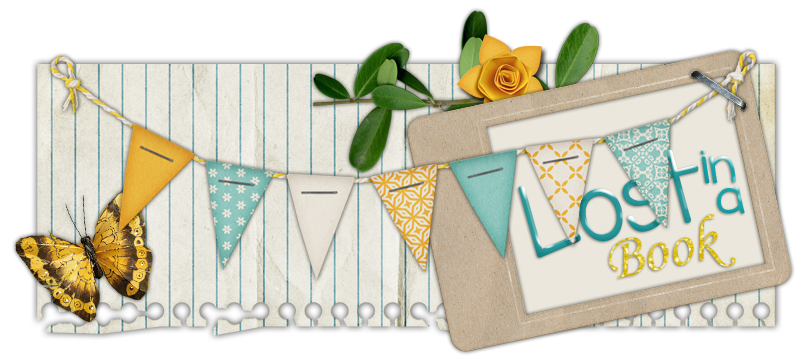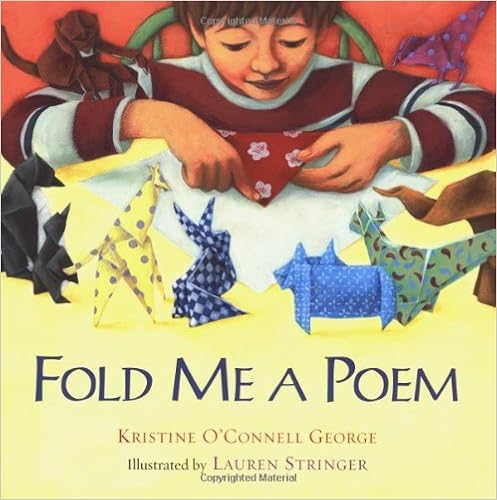Book Cover:

Book Summary:
Little Red needs to write a story and she traveled around the school looking for ways to make her writing better. Some of the places she went included the gym for adding excitement, the library for descriptive words, and the supply closet to add longer sentences (without punctuation stops). Finally she gets to the Principal office where the Wolf 3000 pencil sharpener took Principal Granny's place. Little Red saved the Principal by blowing up the sharpener. She then wrote her own story based on what happened and read it to the class.
APA Reference of Book:
Holub, J., & Sweet, M. (2013).
Little Red writing. San Francisco, CA: Chronicle Books.
Impressions:
The front pages included things from the story like a conversation between characters and a newspaper from the school Little Red is at. The paper includes the copyright information on it. I really like when books use front and end pages to help tell the story and this was cute. I liked the bright cheery colors and illustrations that looked a little bit like a comic or graphic novel. There were different types of text structures and styles all through the book to help differentiate between story and talking of characters. Vocabulary was excellent throughout the book with words such as boogied, hingered, squirrely, and many more instead of weak words. The plot showed how Little Red wanted to write a great story and her problems going about doing it but set in the story of Little Red Riding Hood. So any age group could identify with it. Due to the busy pictures and high vocabulary I would think this could be independently read in second grade to fifth grade.
Professional Review:
Balanced gracefully on her point, Little Red is a courageous young pencil with a storytelling assignment from school. While the other young pencils choose to write about "Pencilvania" or themes based on their novelty erasers, Little Red decides to compose a heroic story. "Remember, it's OK to wander a little, but stick to your basic story path so you don't get lost," warns her teacher, Ms. 2. Holub (Zero the Hero) cleverly combines two elementary-school formulas--the fairy tale and the writing exercise--as she shares the basics of storytelling and grammar. When Little Red activates her narrative with verbs, she "cartwheel[s] right off the page and into… a deep, dark, descriptive forest" where words like "verdant" and "bosky" decorate leaves. Sweet (River of Words) illustrates in a flurry of colored pencil, watercolor, and collage. On yellowed, heavily doodled composition notepaper, she playfully mingles calligraphy, classroom settings, and images of Red defeating a sharp-toothed foe, the Wolf 3000 pencil sharpener. With style, humor, and solid writing advice, Holub and Sweet point out the latent creative potential within any desk drawer or supply cabinet. Ages 5--8. Author's agent: Liza Pulitzer Voges, Eden Street Literary. (Oct.)
Little Red Writing. (2013).
Publishers Weekly, 260(36), 56-57
Library Uses:
There can be many uses for this story! You can focus on the one or several of the writing aspect in the story such as plot, word choice, or punctuation. I would focus on comparing fractured fairy tales. I would read this with another Little Red Riding hood story such as Ninja Red Riding Hood, Lon Popo, or Little Red Cowboy Hat and make a chart for main character, problem, solution, setting, and anything else the students notice. This could also be a springboard for the upper grades to write their own retelling.
My Rating: ****
![Thirteen Reasons Why by [Asher, Jay]](https://images-na.ssl-images-amazon.com/images/I/41y3fxe4KSL.jpg)


![And Tango Makes Three by [Richardson, Justin, Parnell, Peter]](https://images-na.ssl-images-amazon.com/images/I/51t0bZUz3eL.jpg)


![Odd Boy Out: Young Albert Einstein by [Brown, Don]](https://images-na.ssl-images-amazon.com/images/I/51HqIGCjc4L.jpg)
![Gaston by [DiPucchio, Kelly]](https://images-na.ssl-images-amazon.com/images/I/51n9JcEAa2L.jpg)
![Antoinette (Gaston and Friends) by [DiPucchio, Kelly]](https://images-na.ssl-images-amazon.com/images/I/51%2BBoO8lo-L.jpg)
![Eat Like a Bear by [Sayre, April Pulley]](https://images-na.ssl-images-amazon.com/images/I/61hyUieNLiL.jpg)


![The Rise of Renegade X (Renegade X, Book 1) by [Campbell, Chelsea M.]](https://images-na.ssl-images-amazon.com/images/I/51LT9wzGWQL.jpg)
![Last Stop on Market Street by [de la Peña, Matt]](https://images-na.ssl-images-amazon.com/images/I/51QS50PKI3L.jpg)

![The Adventures of Beekle: The Unimaginary Friend by [Santat, Dan]](https://images-na.ssl-images-amazon.com/images/I/51537amGheL.jpg)
![Rosie Revere, Engineer by [Beaty, Andrea]](https://images-na.ssl-images-amazon.com/images/I/618KueCg1UL.jpg)
![Snappsy the Alligator (Did Not Ask to Be in This Book) by [Falatko, Julie]](https://images-na.ssl-images-amazon.com/images/I/51EOT2B5-fL.jpg)



![Trombone Shorty by [Andrews, Troy]](https://images-na.ssl-images-amazon.com/images/I/61RxaSiIfzL._SX260_.jpg)


![All American Boys by [Reynolds, Jason, Kiely, Brendan]](https://images-na.ssl-images-amazon.com/images/I/51SA-8QD5BL.jpg)




